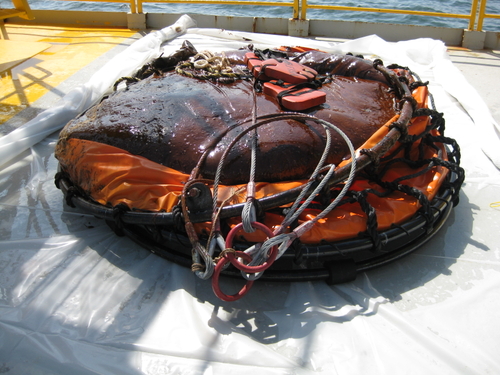 We should have anticipated the question.
We should have anticipated the question.
Last time, we talked
about how to construct your innovation
portfolio. And as you will recall, we said the analogy to keep in
mind is personal financial planning.Just as you divide your personal
holdings among various asset classes—stocks, bonds, and cash—you want to
divide
your innovation efforts among different approaches. And then we
rattled off the four to use:
1. Evolutionary Innovation.
(Technically easy and a clear customer benefit.) This is where you keep
current cash cows fresh and incubate brands in the market.
2.
Differentiation. (Technically difficult and a clear customer
benefit.) This portion of your innovation budget is used for making a
distinction between your products and those of your competitors.
3.
Revolutionary Innovation. (Technically difficult, and there's
no way of knowing ahead of time if the customer will accept it.) Here
you search to find groundbreaking ideas for products, services, and
business models.
4. Fast-Fail Innovation.
(Technically easy but no way of knowing if the customer will accept it.)
This is the activity for which you go to market and do your testing and
learning there.
 How desperate is BP? CEO Doug Suttles finally agreed to purchase 32
of the miracle oil-cleanup machines touted weeks ago by Kevin Costner,
according to ABC
News.
How desperate is BP? CEO Doug Suttles finally agreed to purchase 32
of the miracle oil-cleanup machines touted weeks ago by Kevin Costner,
according to ABC
News.
 Apple's new
Apple's new  Even in a down market, job seekers and employees are not powerless or without recourse.
Even in a down market, job seekers and employees are not powerless or without recourse.
 From Unified Command: The crew of one of the thousands of Vessels of Opportunity (VOO) working in response to the Deepwater Horizon oil spill recently recovered approximately two tons of tarball material in the Gulf of Mexico.
From Unified Command: The crew of one of the thousands of Vessels of Opportunity (VOO) working in response to the Deepwater Horizon oil spill recently recovered approximately two tons of tarball material in the Gulf of Mexico. In our never ending quest to
In our never ending quest to  Who’s Inspiring Today’s Young Entrepreneurs?I’ve always believed in the importance of helping young people become entrepreneurs. The innovation and energy of youth are the building blocks of small-business success. The good news is, there are more and more organizations out there helping America’s kids, teens and young adults thrive as entrepreneurs.
Who’s Inspiring Today’s Young Entrepreneurs?I’ve always believed in the importance of helping young people become entrepreneurs. The innovation and energy of youth are the building blocks of small-business success. The good news is, there are more and more organizations out there helping America’s kids, teens and young adults thrive as entrepreneurs. Last month, researchers at the J. Craig Venter Institute announced that they had made the first synthetic cell by piecing together a genome made from bottled chemicals and transplanting it into a recipient cell. The landmark accomplishment represents a new level of control over the substance of life at the molecular level and one that could lead to ways to make cells that produce vaccines in large quantities and cleaner fuels.
Last month, researchers at the J. Craig Venter Institute announced that they had made the first synthetic cell by piecing together a genome made from bottled chemicals and transplanting it into a recipient cell. The landmark accomplishment represents a new level of control over the substance of life at the molecular level and one that could lead to ways to make cells that produce vaccines in large quantities and cleaner fuels.
 A few weeks ago, an innovation team was painstakingly working through a meticulously crafted spreadsheet detailing the growth potential of their idea. Executives trying to look smart lobbed in "gotcha" questions about specific assumptions in their calculations. Much discussion ensued.
A few weeks ago, an innovation team was painstakingly working through a meticulously crafted spreadsheet detailing the growth potential of their idea. Executives trying to look smart lobbed in "gotcha" questions about specific assumptions in their calculations. Much discussion ensued. African higher education faces a crisis. The quality of university teaching and research has declined drastically as institutions across the continent contend with budget cuts, growing enrollments, repeated strikes, a crumbling infrastructure, and a migration of the most talented professors to developed countries.
African higher education faces a crisis. The quality of university teaching and research has declined drastically as institutions across the continent contend with budget cuts, growing enrollments, repeated strikes, a crumbling infrastructure, and a migration of the most talented professors to developed countries. You have the idea and you have the motivation, but do you have the money? The credit environment right now stinks and you aren’t thrilled with the idea of applying for business loans. Fortunately, you have other options for raising seed capital. If you are creative-minded and determined, you can locate the money you need to start your businesswithout asking a business bank to help.
You have the idea and you have the motivation, but do you have the money? The credit environment right now stinks and you aren’t thrilled with the idea of applying for business loans. Fortunately, you have other options for raising seed capital. If you are creative-minded and determined, you can locate the money you need to start your businesswithout asking a business bank to help. There are lots of entrepreneurs and start-ups with great ideas that, on paper, have the potential to be world-beaters.
There are lots of entrepreneurs and start-ups with great ideas that, on paper, have the potential to be world-beaters. Last week, the
Last week, the  The Leaning Tower was supposed to stand straight and plumb, an imperious monument to the trading power of 12th century Pisa. Built on soft clay, however, the tower began to list only a few years after construction began. Upon completion in 1350, the tower leaned about four and half feet, but as time passed, the angle of the 16,000-ton tower became more precarious. By 1990, the tower leaned about 13 feet off kilter, and nearly two million pounds of lead ingots had to be placed on one of its sides to prevent its collapse. But the nearest the tower has been to destruction had nothing to do with its famed tilt. Allied forces ordered an American sergeant to blow it up during World War II when they thought the Germans were using it as an observation post. Only the reticence of the 23-year-old American saved the tower.
The Leaning Tower was supposed to stand straight and plumb, an imperious monument to the trading power of 12th century Pisa. Built on soft clay, however, the tower began to list only a few years after construction began. Upon completion in 1350, the tower leaned about four and half feet, but as time passed, the angle of the 16,000-ton tower became more precarious. By 1990, the tower leaned about 13 feet off kilter, and nearly two million pounds of lead ingots had to be placed on one of its sides to prevent its collapse. But the nearest the tower has been to destruction had nothing to do with its famed tilt. Allied forces ordered an American sergeant to blow it up during World War II when they thought the Germans were using it as an observation post. Only the reticence of the 23-year-old American saved the tower. 
 Does your startup company culture really
matter? It sure mattered to
Does your startup company culture really
matter? It sure mattered to  Now that U.S. utilities have taken federal stimulus funds and seamlessly built out two-way advanced metering infrastructure (AMI) connecting utility control centers and end users (OK, not completely, but let's assume that the "stall-ulus" becomes a true stimulus in the near future), the question becomes, what's next? At the moment, this new "comm layer" or "platform" has utilities planning in two directions: upstream and downstream from the smart meters. First, they are examining whether and how to leverage these new communication networks to support distribution automation (DA) and grid optimization -- some have argued that it's the embedding of sensors and IT onto the distribution grid that is, in fact, the true sense of what's meant by 'smart grid.' Second, utilities are asking -- and in many cases, piloting to discover -- how best to involve the customer in energy efficiency and demand response programs via home-area networks (HAN) and/or consumer web portals.
Now that U.S. utilities have taken federal stimulus funds and seamlessly built out two-way advanced metering infrastructure (AMI) connecting utility control centers and end users (OK, not completely, but let's assume that the "stall-ulus" becomes a true stimulus in the near future), the question becomes, what's next? At the moment, this new "comm layer" or "platform" has utilities planning in two directions: upstream and downstream from the smart meters. First, they are examining whether and how to leverage these new communication networks to support distribution automation (DA) and grid optimization -- some have argued that it's the embedding of sensors and IT onto the distribution grid that is, in fact, the true sense of what's meant by 'smart grid.' Second, utilities are asking -- and in many cases, piloting to discover -- how best to involve the customer in energy efficiency and demand response programs via home-area networks (HAN) and/or consumer web portals. [Last Thursday] was entirely frustrating. At least for me.
[Last Thursday] was entirely frustrating. At least for me.